The high-resolution convection study uses the results of the sediment plume simulation as initial conditions. The size of the numerical grid is 10 m × 10 m. The model domain has a length of 6 km and a depth of 600 m.
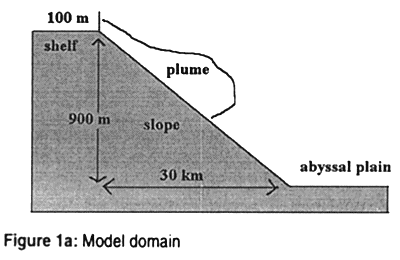
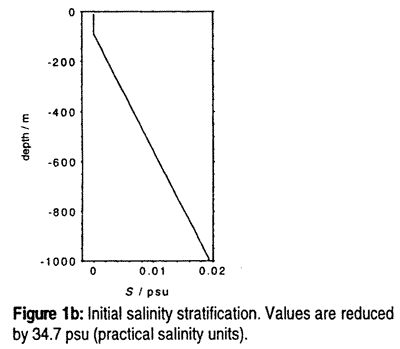
4. RESULTS
A gravity current develops due to the contribution of shelf sediments to the bulk density. This current penetrates down to a depth of 600 m where it stagnates (Figure 2).
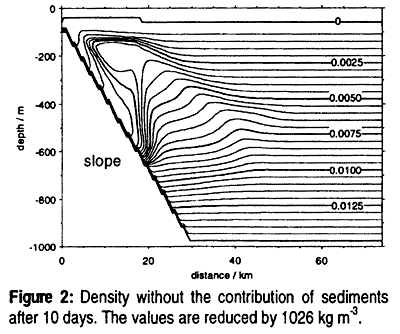
Near the shelf break the plume has a speed > 10 cm/s. On its way, however, entrainment of ambient waters causes a deceleration of the plume, which finally results in a deposition of sediments at a depth of 600 m (Figures 3a and 3b).
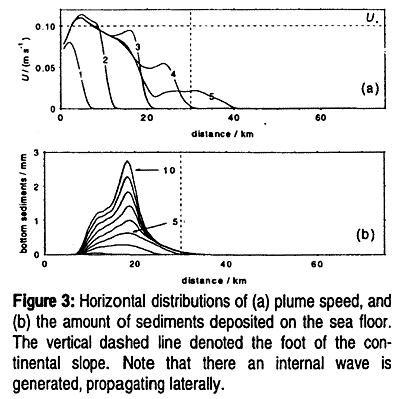
The density stratification remains stable during the simulation (Figure 4). If the sediments were removed, however, the resulting unstable density stratification indicates the possibility of upward directed convection.
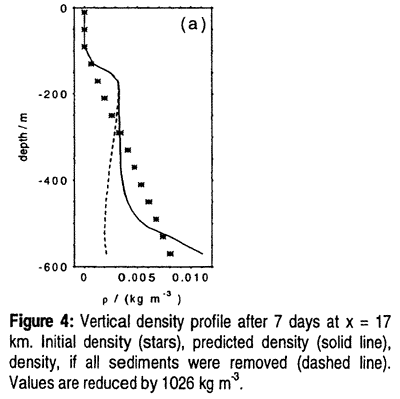
To investigate this problem a high-resolution study is performed, using the prediced local profiles of salinity and sediment concentration contributing to the density profile of figure 4. This study shows that, indeed, upward directed convection is initiated, mixing the entire water column in a depth range from 200 to 600 m (Figure 5).
BACK CONTENTS NEXT